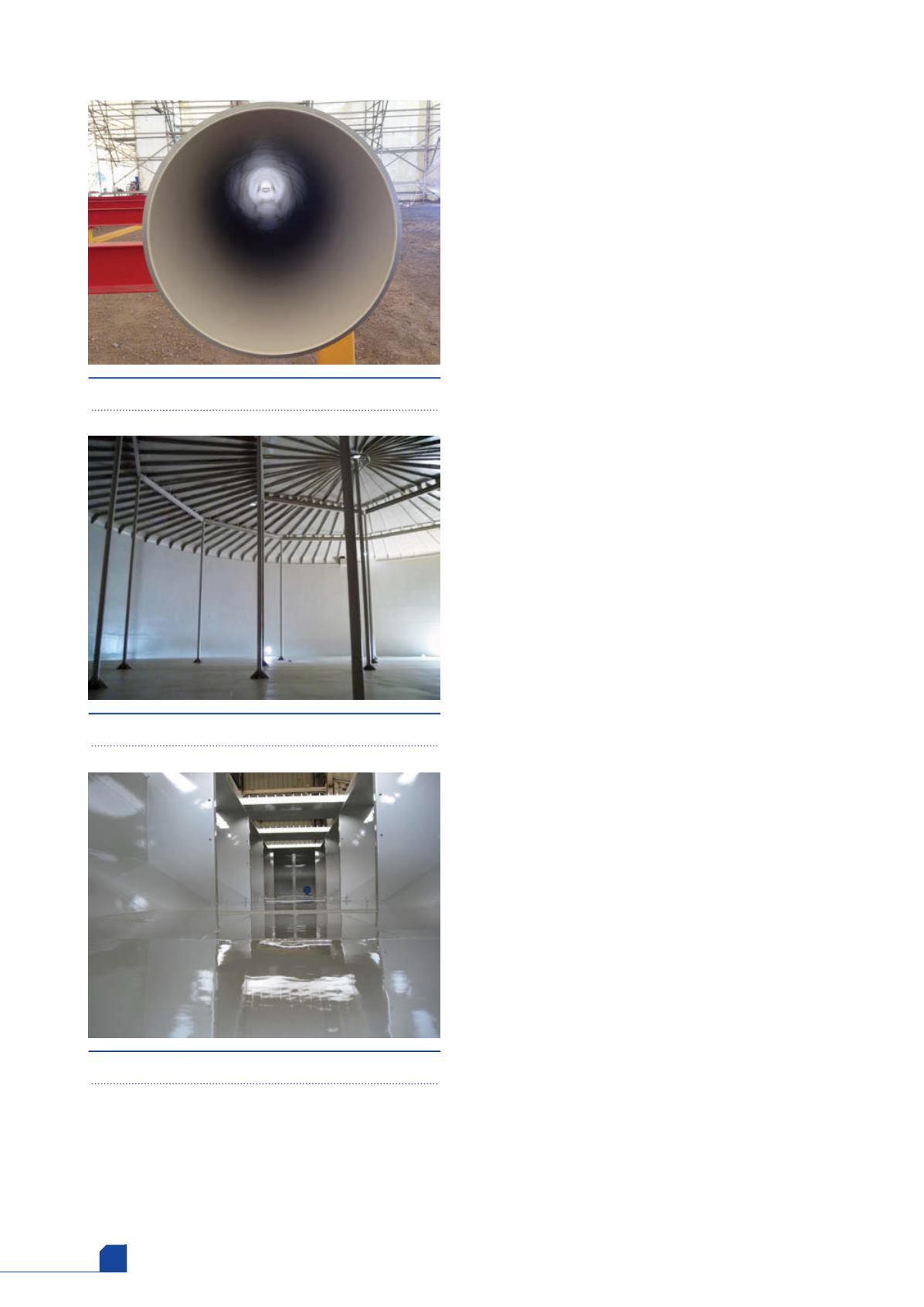
HYDROCARBON
ENGINEERING
76
also brings into play the fact that the coating may need to be
compatible with cathodic protection, a feature that is not
necessarily a given for coating performance.
It is interesting to note that in the latest revision of
NORSOK (Rev 6), the subsea system 7 has now been
altered to incorporate different scenarios, one of which is
a higher temperature system for immersion. System 7C
has now been created to cover the immersion of carbon
steel at >50˚C, which highlights the need for these types
of paint specification in the industry.
These changes mean the role that protective coatings
play is under more scrutiny as they are forced to deal with the
higher temperatures and pressures. High temperatures and/or
high pressures exert a huge stress on linings and coatings,
which then forces the paint manufacturers to develop newer
technologies that can cope with these onerous conditions.
Epoxy-based coatings are tried, tested and well
understood within the coatings industry. Typically, most
‘standard’ epoxies would not withstand immersion at
temperatures greater than 60 - 80˚C, so when dealing with
the higher temperatures, alternative technologies need to be
considered. Phenolic/novolac epoxies have been used
historically for these types of situations, although the top end
immersion performance of some of these can be limited to
around 99˚C. This is also the same when considering high
pressure systems. All coatings have some degree of porosity,
so higher pressure has a tendency to force more air particles
or fluids into the paint film, potentially causing premature
breakdown. Creating a more highly cross-linked film,
combined with the correct pigmentation, can help produce a
much more impermeable coating, which is less susceptible to
damage from high pressures.
Downstream: the need for flexibility
Downstream asset owners' requirements, including storage
terminals, have also expressed the need to have a degree of
flexibility over their tanks, and the ability to swap and
change cargoes from tank to tank is being seen as a more
attractive proposition, effectively ‘future-proofing’ the tanks’
internal lining system. By investing in a lining with resistance
to all potential commodities and temperatures, storage
terminal owners gain the ability to adapt to their client’s
needs and enable them to react at short notice to store
cargoes without the need to re-line the tanks.
Storage flexibility ultimately means being able to cope
with some of the more aggressive cargoes that may be
stored so a robust coatings manufacturer needs to be
selected in conjunction with the owners requirements. The
other advantage to this is to be able to provide a single
solution in order to keep things simple, which is another
message being signalled to the coating manufacturers.
Need for speed
The other aspect to consider is the lining of such tanks or
vessels onsite. Often, there is a need to get the tanks relined
as soon as possible to prevent costly downtime and reduce
the project duration to minimise costs. This is especially true
in refurbishment projects. Fast-curing coatings are becoming
much more popular as these can now enable tanks to be
returned back into service in 24 hours or less after application.
Inspections on the paint film cannot normally be carried out
until the film is sufficiently cured and hard enough to resist an
inspector walking on the film or carrying out standard
inspection tests. These may be as simple as dry film thickness
(DFT) readings or a potentially damaging adhesion or holiday
detection test.
Figure 1.
Pipe lined with Nova plate.
Figure 2.
Internal view of tank.
Figure 3.
Tank linings.


